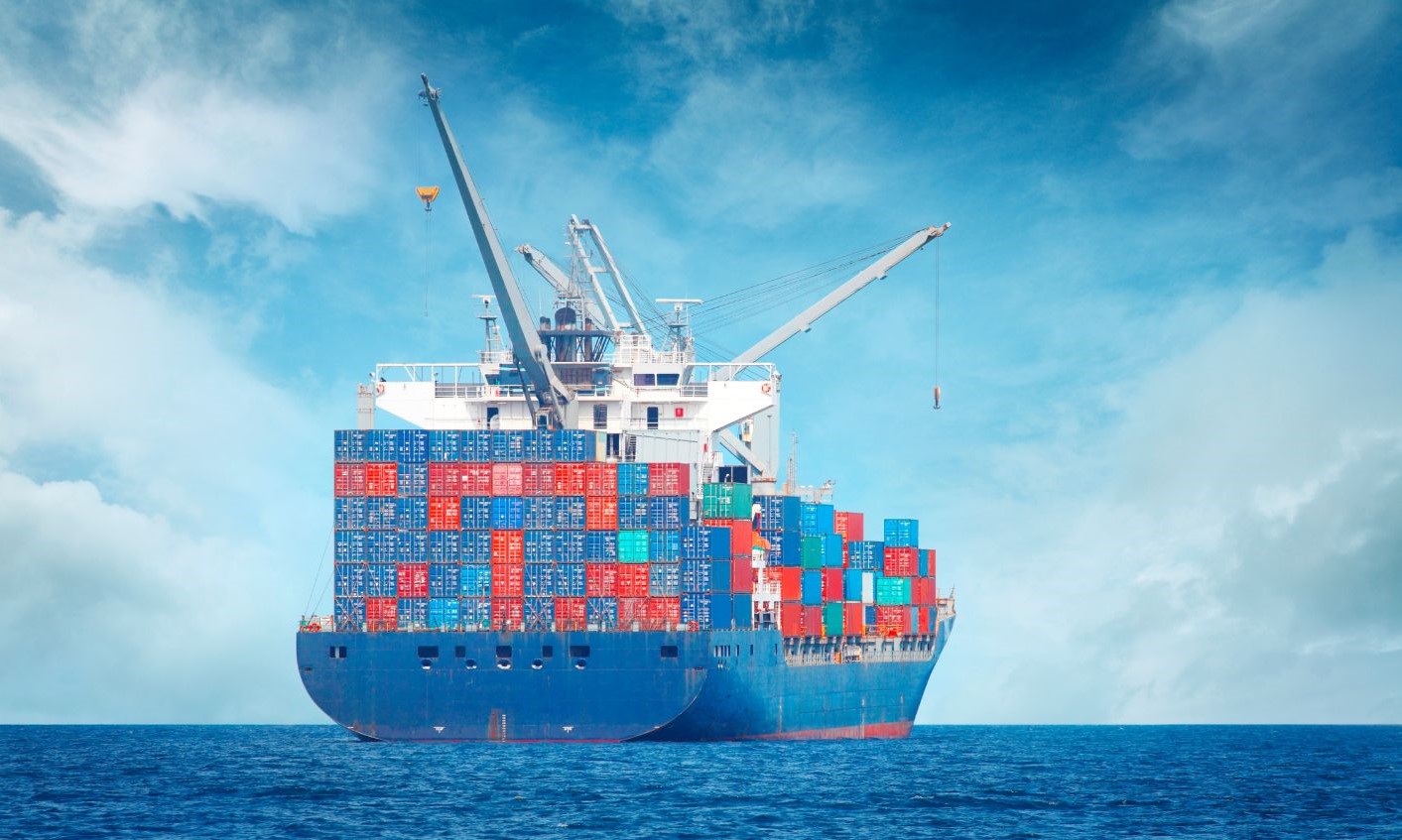
After more than a year of an untenable situation for shippers, between exceptionally high tariffs and a strongly degraded quality of service, the balance is shifting again on the maritime front.
Will the trend continue? What can we expect? And most importantly, as a shipper, what should we do and when?
To answer those questions, Gilles Tranchant, Overseas expert at bp2r.

- Ocean freight rates: back to normal?
- What about quality of service?
- What’s the situation for air freight?
- What can we expect in 2023?
- What should shippers do?
Q. We see that ocean freight rates have been falling rapidly for the past few months. Should we expect a return to normal pricing?
Gilles Tranchant : We are indeed seeing a sudden collapse in spot rates due to the drop in demand, the latter being itself attributable to a well-identified overstock phenomenon. But this must be tempered in several respects. For instance, in the case of the main lines coming from Asia, these rates remain significantly higher than their pre-covid value (30% give or take). So what does “return to normal” mean? Was it normal for shipping companies not to generate any profit?
This is not a matter we can consider all other things being equal: the companies are not going to remain idle. They have invested their profits heavily in takeovers and started anticipating various regulatory changes. At the same time, they became accustomed to generating profit. In recent weeks, the blank sailings rate was 14% and this trend is accelerating. For example, on Asia-North America routes, companies have aggressively reduced capacity, and the decline in spot rates seems to have slowed. Historically more passive on Asia-Europe flows, they will also react quickly, if they have not already done so. On transatlantic routes, the carriers have never wanted to reinject capacity, so rates remain high.
I think we should reach a plateau in the first quarter of 2023 with a lot of uncertainty for the future: IMO regulations, demand, capacity, carbon market, social unrest in China, South Corea, the US… Operative cost per container is 50% higher than before the pandemic. The trend could be reversed again, so beware!
On the other hand, spot rates are affected by these decreases, which are now clearly out of step with the long-term contracts signed with the shipping companies. They include a contractual commitment to a certain volume and it is therefore difficult for shippers to switch directly to spot rates. This is a great time to launch a call for tenders for maritime freight in order to benefit from the economic situation! The window of opportunity is possibly narrow.
Q. While the pricing situation is improving, what about the quality of service?
G.T. : On this front, things have also improved a little (schedule reliability was at 52% in October), but the situation remains precarious. The increase in the number of blank sailings puts more pressure on the level of service. As far as harbour congestion is concerned, things have calmed down but we should not be under any illusions: the reasons behind this improvement are purely conjunctural! Demand is at a low point but social discontent is strong in Europe with high inflation that is not compensated by salaries. The zero-covid policy is still threatening in China. In short, here again, act with caution!
What about air freight? What is the situation?
G.T. : Here too, rates are eroding due to sluggish demand (-11% in September 2022 year-on-year). The resumption of passenger flights has also largely helped in easing the situation – a large proportion of air freight is carried in the holds of commercial flights.
But here again, the situation remains rather fragile because shippers have become accustomed to resorting to air transport, both structurally and as a reflex response to capacity tensions on the sea. And we know that between the shipping companies’ actions on capacity, the gradual exhaustion of shippers’ stocks and a possible resumption of growth during 2023, the situation could become tense again on the sea. This could therefore lead to a shift to air transport and, consequently, to additional pressure on capacity. Demand for air cargo is expected to structurally grow and double by 2041 according to Boeing’s latest forecast.
Finally, freight forwarders have invested heavily in chartering dedicated aircraft to secure capacity. his is also the case for shipping companies that have created air freight subsidiaries (CMA CGM, Maersk, MSC…). Here again, they will not accept excessive rate cuts and now have more negotiating power with this locked-in capacity which they can adjust.
Q. So we can not expect peace of mind for shippers just yet? What will 2023 be made of?
G.T. : To sum up what I have just said, some players have become accustomed and will not accept a return to the pre-Covid rates. You could say that shippers have lost some of their leverage. For 2023, two phenomena are fairly certain for the time being: shipping companies will continue to reduce available capacity in a race to the bottom with slowing demand. For their part, shippers will – and must – renegotiate their contracts and launch new tenders. Behind this, there is a lot of uncertainty. When will demand pick up again? At what pace? How will the shipping companies react at that point?
I am a little worried for two reasons. On one hand, a good part of the shippers who have started to engage in procurement processes – renegotiation or tendering – seem to expect that everything will be the same as before. In other words, they want to negotiate price reductions, which is perfectly legitimate given the situation, but without any compensation. No commitment on volumes, no reliable forecasts… Companies will not accept this and those that do will pull the plug on these contracts at the first opportunity. And that will be costly.
Even more worrying is the fact that the organisational efforts made during the rate explosion phase are now being neglected. A lot has been done in terms of making data more reliable, improving the quality of forecasts, etc. Because of the situation, these changes were often rushed. But such initiatives take time and need to be developed further and, in this favourable climate, I can see that many shippers have unfortunately put a hold on these efforts.
And beyond the little dance between supply and demand for 2023, there are other question marks in the longer term. What will be the impact of the future integration of maritime freight into the European carbon market? We are talking about an average of $400 per container, which will probably be passed on in full to the shipper. There will also be avoidance strategies with additional breaking bulks in order not to send ships that have travelled a long distance within the EU. These will have an impact on the level of service and transit time. And of course there are the IMO regulations approaching on the pollution side.
Q. As a shipper, what should I do then ?
G.T. : Take advantage of the context to renegotiate, of course, but do so realistically by offering guarantees. Shipping companies are now protecting themselves with mechanisms that did not exist before covid, for example a tariff adjustment according to the volumes loaded and the difference with the forecast. It is important to draw the right conclusions and to be particularly careful with forecasts. There are strong implications in terms of digitalization, organizational thinking, make-or-buy for some of the tasks and skills… We must not give up on the fundamental issues because the wind has changed! It will change again, and probably quite quickly.
You have to be prepared, as we have seen in road transport since 2017, for constant uncertainty and a structurally less favorable balance of power for shippers. And all this will come in a increasingly restrictive regulatory context. Shippers will have to work upon themselves to better anticipate, to become more agile and not just focus on the balance of power as it stands.
If your are facing challenges directly related to what I’m describing, or simply just want to have a chat about the article, feel free to contact me.
Shoot me an email at gilles.tranchant@bp2r.eu or contact bp2r using the button below. I would gladly discuss this topic with you!


 Define my strategy and transport organisation
Define my strategy and transport organisation Lower my transport costs
Lower my transport costs